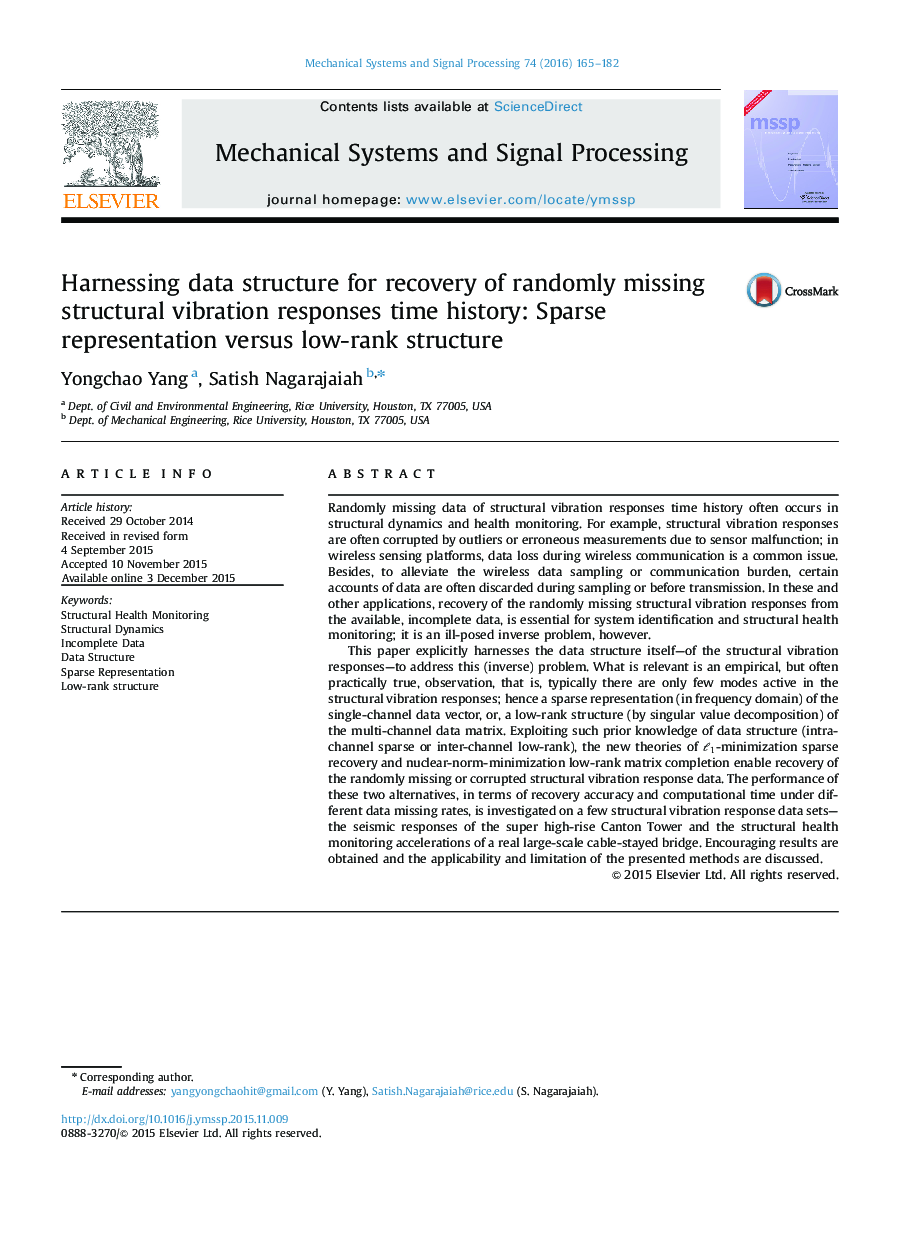| کد مقاله | کد نشریه | سال انتشار | مقاله انگلیسی | نسخه تمام متن |
|---|---|---|---|---|
| 561032 | 1451857 | 2016 | 18 صفحه PDF | دانلود رایگان |
• Propose a general formulation of randomly missing data completion for recovery of the incomplete or corrupted structural vibration measurements.
• Harness the implicit data structure of sparse single-channel vector and reshaped low-rank multi-channel matrix of structural vibration responses.
• Missing data recovery enabled by ℓ1ℓ1-minimization sparse vector recovery and nuclear-norm-minimization reshaped low-rank matrix completion.
• Demonstrations by the recorded seismic responses of the Canton Tower and the SHM accelerations of a real cable-stayed bridge.
Randomly missing data of structural vibration responses time history often occurs in structural dynamics and health monitoring. For example, structural vibration responses are often corrupted by outliers or erroneous measurements due to sensor malfunction; in wireless sensing platforms, data loss during wireless communication is a common issue. Besides, to alleviate the wireless data sampling or communication burden, certain accounts of data are often discarded during sampling or before transmission. In these and other applications, recovery of the randomly missing structural vibration responses from the available, incomplete data, is essential for system identification and structural health monitoring; it is an ill-posed inverse problem, however.This paper explicitly harnesses the data structure itself—of the structural vibration responses—to address this (inverse) problem. What is relevant is an empirical, but often practically true, observation, that is, typically there are only few modes active in the structural vibration responses; hence a sparse representation (in frequency domain) of the single-channel data vector, or, a low-rank structure (by singular value decomposition) of the multi-channel data matrix. Exploiting such prior knowledge of data structure (intra-channel sparse or inter-channel low-rank), the new theories of ℓ1ℓ1-minimization sparse recovery and nuclear-norm-minimization low-rank matrix completion enable recovery of the randomly missing or corrupted structural vibration response data. The performance of these two alternatives, in terms of recovery accuracy and computational time under different data missing rates, is investigated on a few structural vibration response data sets—the seismic responses of the super high-rise Canton Tower and the structural health monitoring accelerations of a real large-scale cable-stayed bridge. Encouraging results are obtained and the applicability and limitation of the presented methods are discussed.
Journal: Mechanical Systems and Signal Processing - Volume 74, 1 June 2016, Pages 165–182
